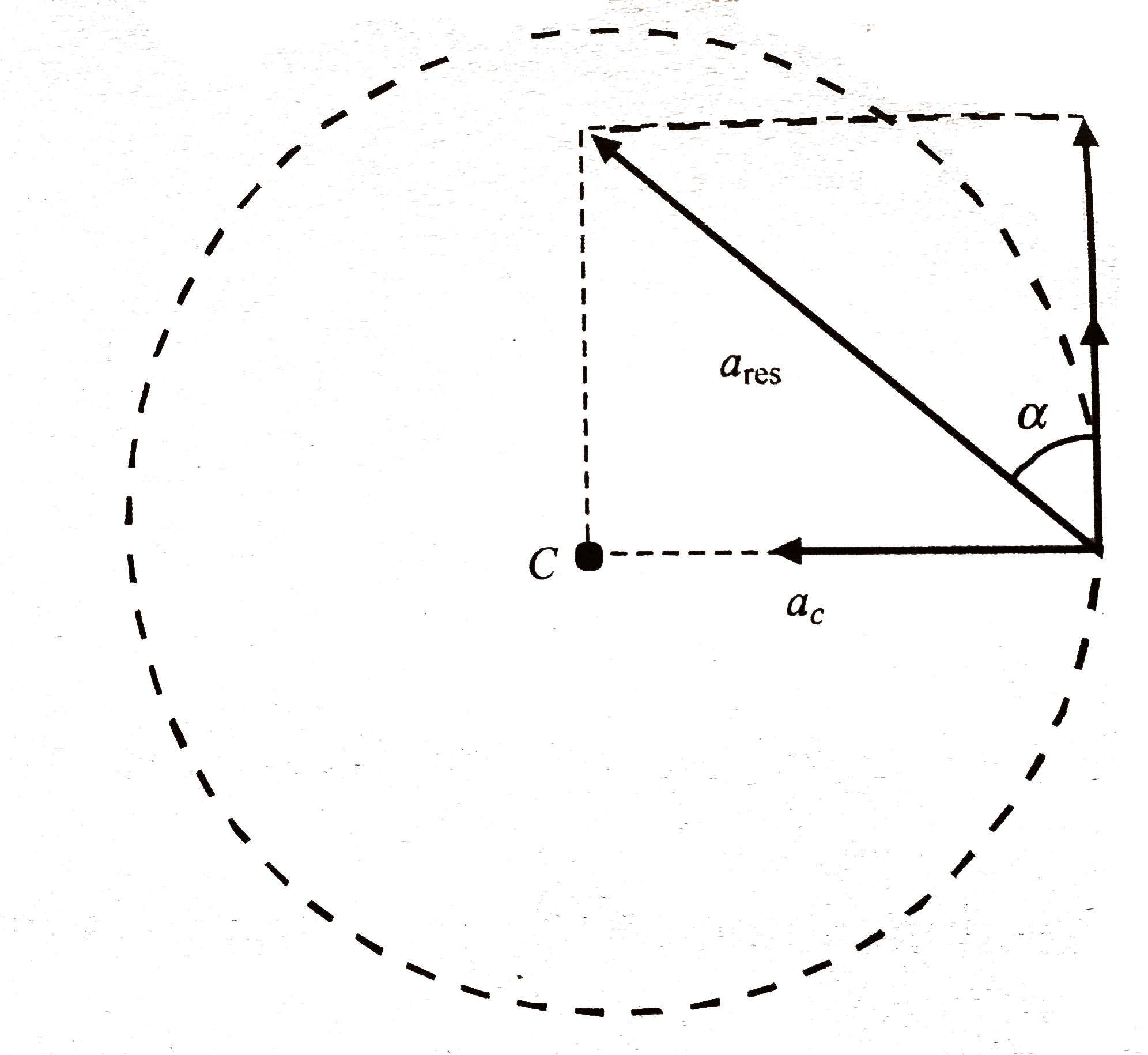A particle moves on a circle of radius r with centripetal acceleration as function of time as ac=k2rt2, where k is a positive constant. Find the following quantities as function of time at an instant :
(a) The speed of the particle
(b) The tangential acceleration of the particle
( c) The resultant acceleration, and
(d) Angle made by the resultant with tangential direction.
(a) In the problem, it is given that ac=k2rt2
Since ac=v2r⇒v2r=k2rt2
⇒v2=k2r2t2
Taking square root on both sides, we get v=krt
(b) Tangential acceleration,
at=dvdt=ddt(krt)=kr
( c) Resultant acceleration,
ares=√a2c+a2t
=√(k2rt2)2+(kr)2
=kr√k2t4+1.
(d) From (Fig. 148), tan∝=acat=k2rt2kr=kt2
⇒∝=tan−1(kt2).
 .
.
Topper's Solved these Questions
- BOOK - CENGAGE PHYSICSCHAPTER - KINEMATICS-2EXERCISE - Solved Examples7videos
KINEMATICS-2
- BOOK - CENGAGE PHYSICSCHAPTER - KINEMATICS-2EXERCISE - Exercise 5.115videos
KINEMATICS-2
- BOOK - CENGAGE PHYSICSCHAPTER - KINEMATICS-1EXERCISE - Integer9videos
KINEMATICS-1
- BOOK - CENGAGE PHYSICSCHAPTER - KINETIC THEORY OF GASESEXERCISE - Compression2videos
KINETIC THEORY OF GASES
Similar Questions
A particle of mass m impves along a horzontal circle of radius R such that normal acceleration of particle varies with time as an=kt2. where k is a constant.
Total force on particle at time t s isView SolutionA particle moves in a circle of radius 5 cm with constant speed and time period 0.2πs. The acceleration of the particle is
View Solution
Knowledge Check
- Question 1 - Select One
A particle moves on a circle of radius r with centripetal accelration as function of time as ac=K2rt2 where k is a positive constant , find the resu ltant acceleration.
Akt2BkrCkr√k2t4+1Dkr√k2t2−1 - Question 2 - Select One
A particle moves in a circle of radius 2 m at a second
what is its resultant (total ) acceleration at time t=1 s ?A8m/s2B2√2m/s2C5√5m/s2D4√5m/s2 - Question 3 - Select One
A particle of mass m moves along a circular path of radius r with a centripetal acceleration an changing with time t as an=kt2, where k is a positive constant. The average power developed by all the forces acting on the particle during the first t0 seconds is
A(a) mkrt0B(b) mkrt202C(c) mkrt02D(d) mkrt04
A particle moves in a circle of radius 5 cm with constant speed and time period 0.2π. The acceleration of the particle is:
View SolutionA particle moves in a circle of radius 5 cm with constant speed and time period 0.2πs. The acceleration of the particle is
View SolutionA particle is moving in a circle with a constant speed, the acceleration of the particle has
View SolutionA particle with the constant speed in a circle of radius r and time period T.The centripetal acceleration of a particle is
View SolutionA particle of mass m impves along a horzontal circle of radius R such that normal acceleration of particle varies with time as an=kt2. where k is a constant.
Tangential force on particle at t s isView Solution

